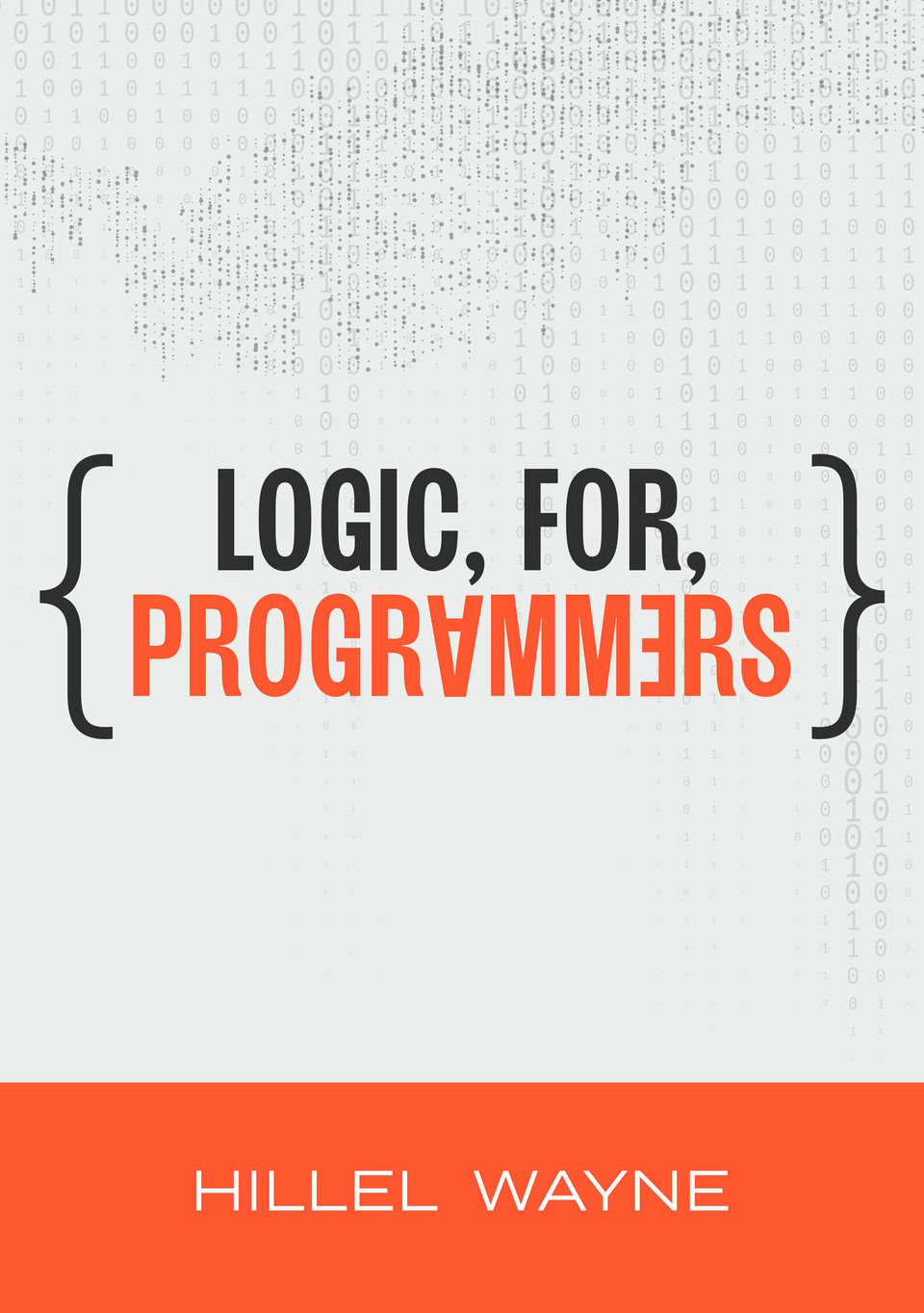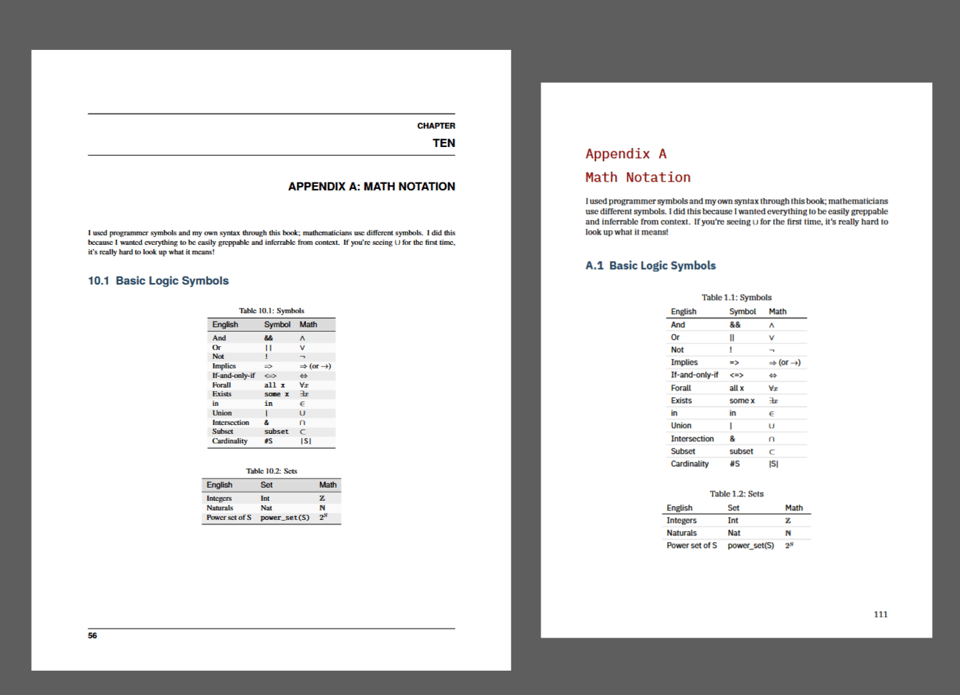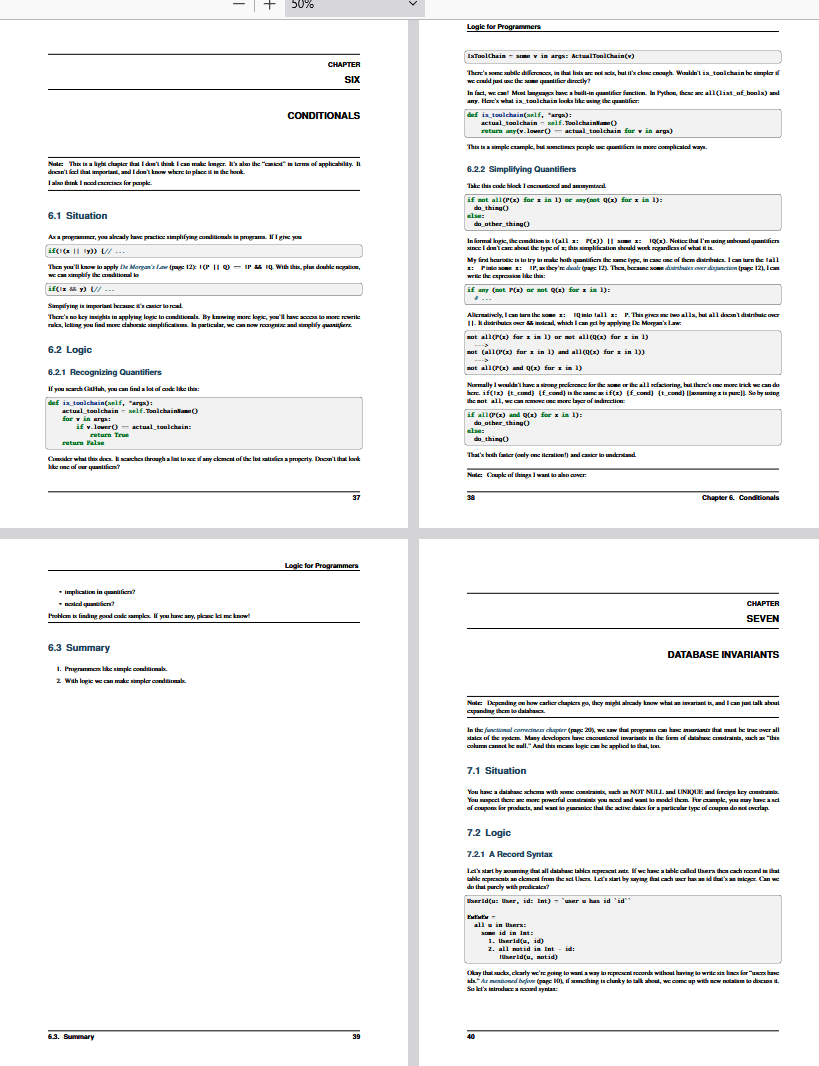Logic for Programmers Turns One
History, updates, metrics, and next steps.
I released Logic for Programmers exactly one year ago today. It feels weird to celebrate the anniversary of something that isn't 1.0 yet, but software projects have a proud tradition of celebrating a dozen anniversaries before 1.0. I wanted to share about what's changed in the past year and the work for the next six+ months.

The Road to 0.1
I had been noodling on the idea of a logic book since the pandemic. The first time I wrote about it on the newsletter was in 2021! Then I said that it would be done by June and would be "under 50 pages". The idea was to cover logic as a "soft skill" that helped you think about things like requirements and stuff.
That version sucked. If you want to see how much it sucked, I put it up on Patreon. Then I slept on the next draft for three years. Then in 2024 a lot of business fell through and I had a lot of free time, so with the help of Saul Pwanson I rewrote the book. This time I emphasized breadth over depth, trying to cover a lot more techniques.
I also decided to self-publish it instead of pitching it to a publisher. Not going the traditional route would mean I would be responsible for paying for editing, advertising, graphic design etc, but I hoped that would be compensated by much higher royalties. It also meant I could release the book in early access and use early sales to fund further improvements. So I wrote up a draft in Sphinx, compiled it to LaTeX, and uploaded the PDF to leanpub. That was in June 2024.
Since then I kept to a monthly cadence of updates, missing once in November (short-notice contract) and once last month (Systems Distributed). The book's now on v0.10. What's changed?
A LOT
v0.1 was very obviously an alpha, and I have made a lot of improvements since then. For one, the book no longer looks like a Sphinx manual. Compare!

Also, the content is very, very different. v0.1 was 19,000 words, v.10 is 31,000.1 This comes from new chapters on TLA+, constraint/SMT solving, logic programming, and major expansions to the existing chapters. Originally, "Simplifying Conditionals" was 600 words. Six hundred words! It almost fit in two pages!

The chapter is now 2600 words, now covering condition lifting, quantifier manipulation, helper predicates, and set optimizations. All the other chapters have either gotten similar facelifts or are scheduled to get facelifts.
The last big change is the addition of book assets. Originally you had to manually copy over all of the code to try it out, which is a problem when there are samples in eight distinct languages! Now there are ready-to-go examples for each chapter, with instructions on how to set up each programming environment. This is also nice because it gives me breaks from writing to code instead.
How did the book do?
Leanpub's all-time visualizations are terrible, so I'll just give the summary: 1180 copies sold, $18,241 in royalties. That's a lot of money for something that isn't fully out yet! By comparison, Practical TLA+ has made me less than half of that, despite selling over 5x as many books. Self-publishing was the right choice!
In that time I've paid about $400 for the book cover (worth it) and maybe $800 in Leanpub's advertising service (probably not worth it).
Right now that doesn't come close to making back the time investment, but I think it can get there post-release. I believe there's a lot more potential customers via marketing. I think post-release 10k copies sold is within reach.
Where is the book going?
The main content work is rewrites: many of the chapters have not meaningfully changed since 1.0, so I am going through and rewriting them from scratch. So far four of the ten chapters have been rewritten. My (admittedly ambitious) goal is to rewrite three of them by the end of this month and another three by the end of next. I also want to do final passes on the rewritten chapters; as most of them have a few TODOs left lying around.
(Also somehow in starting this newsletter and publishing it I realized that one of the chapters might be better split into two chapters, so there could well-be a tenth technique in v0.11 or v0.12!)
After that, I will pass it to a copy editor while I work on improving the layout, making images, and indexing. I want to have something worthy of printing on a dead tree by 1.0.
In terms of timelines, I am very roughly estimating something like this:
- Summer: final big changes and rewrites
- Early Autumn: graphic design and copy editing
- Late Autumn: proofing, figuring out printing stuff
- Winter: final ebook and initial print releases of 1.0.
(If you know a service that helps get self-published books "past the finish line", I'd love to hear about it! Preferably something that works for a fee, not part of royalties.)
This timeline may be disrupted by official client work, like a new TLA+ contract or a conference invitation.
Needless to say, I am incredibly excited to complete this book and share the final version with you all. This is a book I wished for years ago, a book I wrote because nobody else would. It fills a critical gap in software educational material, and someday soon I'll be able to put a copy on my bookshelf. It's exhilarating and terrifying and above all, satisfying.
-
It's also 150 pages vs 50 pages, but admittedly this is partially because I made the book smaller with a larger font. ↩
Add a comment: